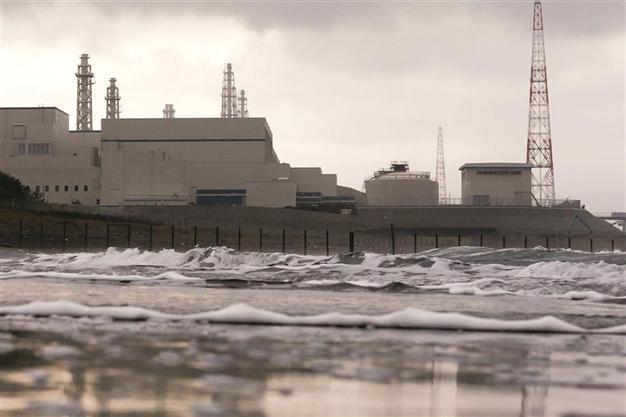Tokyo Electric seeks to restart largest nuclear plant of world
TOKYO - Reuters

Final approval to resume power generation at the Kashiwazaki Kariwa facility, the world’s largest nuclear plant some 300 km northwest of Tokyo, is uncertain amid the heated discussions. REUTERS photo
Tokyo Electric Power Co on Sept 27 applied to restart a nuclear plant in northwestern Japan, an initial step on its planned recovery from the Fukushima nuclear disaster.
But final approval to resume power generation at the Kashiwazaki Kariwa facility, the world’s largest nuclear plant some 300 km (180 miles) northwest of Tokyo, is uncertain and any decision would take many months at best.
All of Japan’s 50 reactors were shut down after the 2011 earthquake and tsunami crippled the Fukushima plant, triggering a nuclear crisis and a spike in popular opposition to the industry. Two units were brought back on line last year, but recent shutdowns have left Japan without nuclear power for only the third time since 1970.
The return to government last year of Prime Minister Shinzo Abe, a proponent of nuclear power who says Fukushima is “under control”, has given rise to suggestions that idled reactors may be restarted under new safety guidelines. The process is expected to take well into next year.
After winning approval from a previously reluctant local governor in Niigata prefecture, where the Kashiwazaki Kariwa facility is located, Tokyo Electric (Tepco) applied on Friday to Japan’s nuclear regulator for permission to restart two of the plant’s seven reactors. Tepco shares jumped more than 11 percent on Friday, ending up 6.6 percent at 597 yen - their highest close in more than 5 weeks - boosted by hopes the company may eventually be able to restart the plant.
Under pressureJapan’s government, though, is keeping up the pressure on Tepco to improve safety.
“Nothing is more important than safety and getting the understanding of the local people,” Trade and Industry Minister Toshimitsu Motegi told Tepco President Naomi Hirose on Friday. “I want you to continue making efforts to improve safety.”
Hirose said Tepco’s application to the independent Nuclear Regulation Authority (NRA) was just the beginning of the process, and it will work with local authorities on safety measures. On Wednesday, Hirose told Niigata Governor Hirohiko Izumida that Tepco would improve safety by attaching an additional filter vent to ease pressure inside containment vessels if an emergency arose.
Izumida, a strident critic of Tepco, said he was allowing the utility to apply for safety approval, but withholding final judgment on restarting the plant.
“Kashiwazaki Kariwa nuclear power plant may be halted, but it is a living facility, and safety must be ensured at the plant,” he said in a statement faxed to Reuters. Izumida had previously denounced Tepco as unfit to run a nuclear plant and has called for the company’s liquidation.
To restart reactors, utilities need local approval and certification on safety grounds from the NRA, which was set up after its predecessor was discredited by the 2011 disaster. On Wednesday, NRA Chairman Shunichi Tanaka had declined to comment on prospects for a restart of Kashiwazaki Kariwa.
Four other electric utilities have sought NRA approval for restarts. The nuclear shutdowns have forced Japan to import costly fuel to meet its power needs. The country has run trade deficits for 14 months, the longest string since 1979-80.
Tepco is already behind schedule on its revival plan, which called for firing up at least one Kashiwazaki Kariwa reactor by April of this year. If all seven reactors were operational, Tepco says it would save the company $1 billion a month in costs to generate power for Japan’s biggest economic region, but Abe asked Tepco to spend about that amount on decommissioning the crippled facility.
